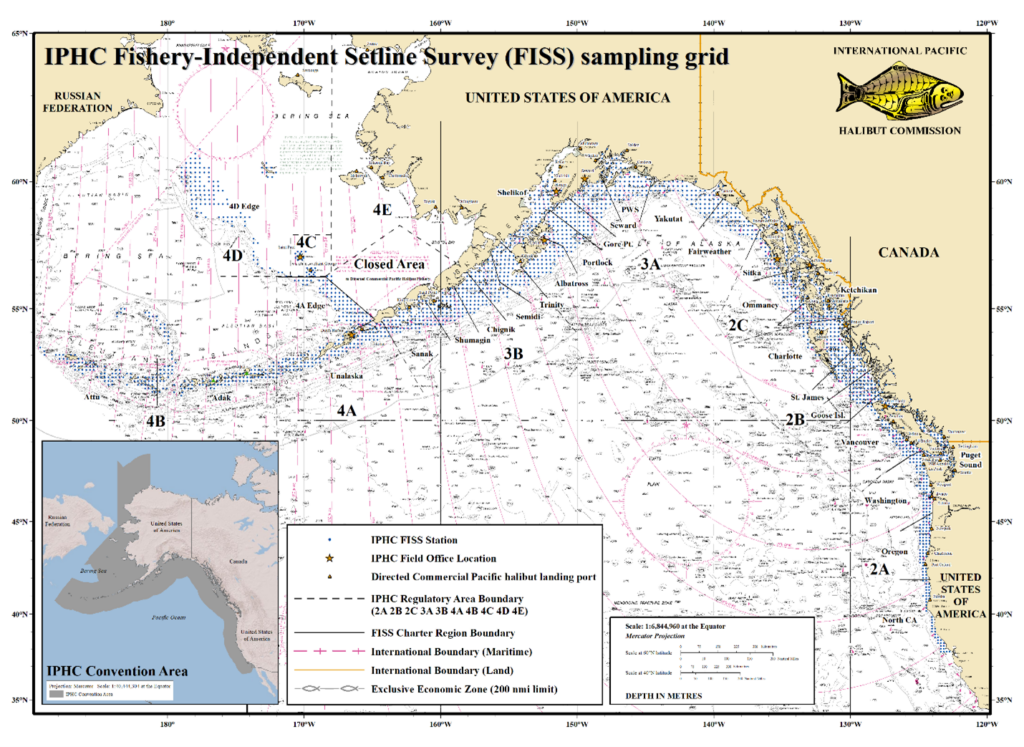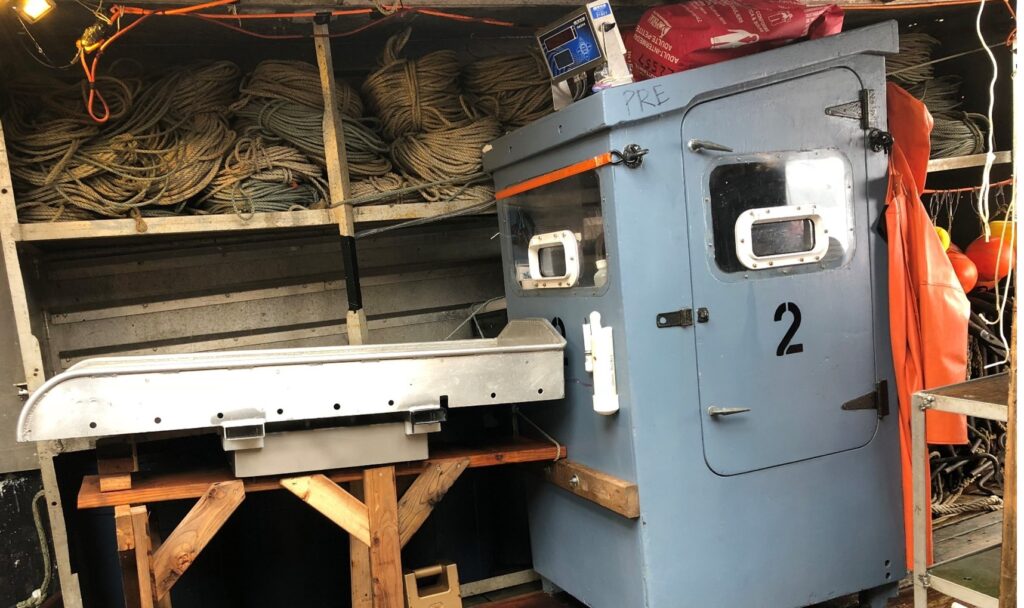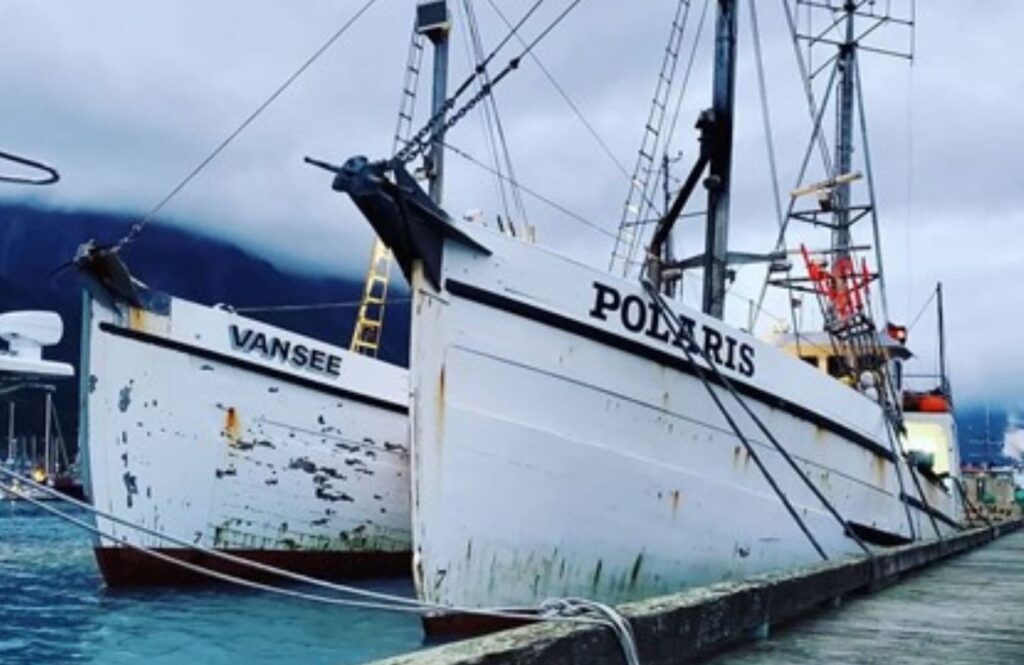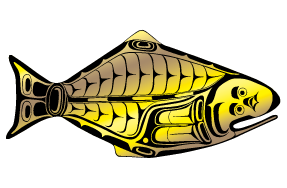Vessel Recruiting
As an IPHC charter vessel operator, the annual Fishery-Independent Setline Survey (FISS) work can strengthen your business plan by providing guaranteed income for you and your crew during the summer months.
Document
Title
Availability
Income
Vessels are paid a lump sum for each charter region plus a portion of fish sales revenue. The lump sum payment is the bulk of a vessel’s compensation and is broken into two separate payments. The first 50% is paid at commencement of work in each charter region, and the second 50% is paid at the completion of each charter region. All fish caught on the FISS are the property of the IPHC and are sold to offset the annual costs of operating the FISS. However, to compensate for the added work at high-catch stations, vessels keep 10% of all Pacific halibut and 50% of bycatch sales revenue as a processing payment, dependent on the contract specifics. All bait is provided by the IPHC. Lost gear will be reimbursed, and there is compensation for wear and tear on your gear throughout the FISS.
In recent years, contract payments ranged from $48,000 to $135,000 (USD) for a charter region in Washington, Oregon, and British Columbia. In Alaska, payments ranged from $35,000 to $140,000.
IPHC Fishery-Independent Setline Surveys (FISS) Vessel Tender Specifications
The International Pacific Halibut Commission (IPHC) requests tenders from commercial fishing and research vessels to perform Fishery-Independent Setline Survey (FISS) charters, during the summer (Late May through September) of 2025, designed to collect information required to support the IPHC’s annual stock assessment. This information is used to study aspects of the Pacific halibut stock, such as abundance, growth, distribution, area-wide biomass, age composition, sexual maturity, and relative abundance of associated bycatch species. The “2025 IPHC Fishery-Independent Setline Surveys (FISS) Vessel Tender Specifications” contains all the details needed to submit a tender for a FISS contract during the summer of 2025. The below document describes the conditions of the contract(s), contains a description of the work, and outlines some of the potential charges incurred by vessels working outside their country of registration.
FISS Station Location by Charter Region
The “2025 FISS Station Maps and Previous Catch Tables” document outlines the Pacific halibut, Pacific cod, and rockfish projections for each station of the FISS. Stations are grouped by 10 charter regions within the IPHC Regulatory Areas from Oregon to the Aleutian Islands.
FISS Vessel Tender Form
VESSEL TENDER FORM – The web-based form is currently open.
Step 1: Review the previous documents (2025 IPHC Fishery-Independent Setline Surveys (FISS) Vessel Tender Specifications and 2025 FISS Station Locations by Region)
Step 2: Prepare your 2025 IPHC FISS Vessel Tender Form for submission. Have all pertinent information and charter plan ready before starting the form. You can review the online form before submission by clicking the link below.
Step 3: Submit your 2025 IPHC FISS Vessel Tender Form using the form linked below.
Step 4: If you are new to IPHC FISS work (or haven’t performed FISS work in recent years), please let us know as soon as possible of your intention to tender, so that we can schedule an inspection of your vessel. This will expedite the process.
Other benefits of working in the FISS
Working on the IPHC’s FISS keeps the vessel and crew busy throughout the summer. The broad geographical range allows you to visit unfamiliar grounds and ports or focus on regions near your home port. You also become an important player in understanding and contributing to the stock assessment process.
Scope
The FISS area ranges from northern California through Attu Island to the west and St. Matthew Island and the Bering Sea shelf edge to the north, covering a depth range suitable for Pacific halibut. There are 1,100-1,500 stations fished annually, grouped for logistical purposes into charter regions. Charter regions have 40 to 70 stations and require two to six weeks to complete. A vessel may complete up to four charter regions in a summer.

The collected biological data are used to monitor changes in Pacific halibut biomass, growth, and mortality. Information on non-target species caught during FISS operations provide insight into bait competition, rate of bait attacks, and serve as an index of abundance over time for these species.
FISS fishing is very different from commercial fishing. IPHC’s goal is not to find the best spots with the most fish, but to adhere to the standards of the FISS, such as location, soak-time, bait size, and gear setup. FISS station location is paramount, and the midpoint of a set should coincide with a station’s coordinates.
It sounds easier than it is. In fact, after their first IPHC FISS season, most vessel owners tell us the daily baiting and gear turnover is more challenging than they had anticipated because of the schedule. The stations are arranged in a 10 nm x 10 nm grid (see image below). The station locations have remained the same for over a decade with some added expansions to fill in gaps in coverage. In most areas, three stations may be fished in a single day, with a maximum of four stations fished.


Vessel types
All vessel captains hired for the FISS have prior experience longlining for Pacific halibut.
Vessel lengths range from 40-120 feet (12-37 m); however, 60-70 feet (18–21 m) is most common. Running speed should be 8 knots or faster. There needs to be bunks for two to three IPHC Secretariat, plus three to five vessel crew members. A valid USCG inspection sticker or Canada Steamship Inspection Certificate is mandatory.

Gear
FISS gear has strict standards. It must consist of #3 16/0 circle hooks, threaded through the front, on gangions 24 to 48 inches (61 to 122 cm) (no swivels) spaced 18 feet (5.5 m) apart on the groundline. A FISS skate is 1,800 feet (549 m) long and has 100 hooks. Generally, four to eight skates of gear are deployed at each station with up to four stations fished a day. Refer to the 2025 IPHC FISS Vessel Tender Specifications (pdf) for additional details.

Crew
Skippers must be experienced with longline fishing. The captain’s fishing experience and crew qualifications factor into the selection process. Generally, three to five crew are needed.
Setline Survey Specialists
The IPHC recruits highly qualified candidates with a background in fishery-dependent/fishery-independent field work to become setline survey specialists. Setline survey specialists become certified in safety and cold-water emergency survival and are provided with training to collect quality data aboard FISS vessels. Many of the setline survey specialists say the best thing about the IPHC FISS work is the teamwork and collaboration between biologists and fishermen working towards a common goal.
Typical day of FISS fishing
| 5 AM | Set first station of the day. Then run to next station and set that gear. Run to the next station and set and repeat up to max of four stations. |
| 10 AM | A station (also called a “set”) may be hauled after a mandatory minimum of five hours of soak time. The gear is baited during hauling throughout the day, but not set again until the following morning. |
| 7-10 PM | Depending on the weather and catch, all gear has usually been hauled by 10 PM and often by 7 PM. Most vessels should also count on a few long days hauling gear until after midnight. |

